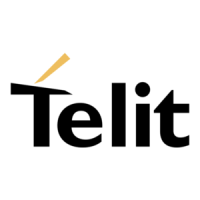LE910Cx Hardware Design Guide
1VV0301298 Rev.40 Page 15 of 149 2023-03-16
Not Subject to NDA
Function Features
Application processor Application processor to run customer application code
32-bit ARM Cortex-A7 up to 1.3 GHz running the Linux operating system
Flash + DDR are large enough to allow for customer’s own software
applications
Interfaces Rich set of interfaces, including:
SD/MMC Card Interface supporting SD3.0 standard
SDIO for external WiFi transceiver supporting SDIO3.0 standard
SGMII for external Ethernet transceiver
Compliant with IEEE802.3
Full duplex operation at 1 Gbps
Half/full duplex operation at 10/100 Mbps
Support for VLAN tagging
Support for IEEE1588, PTP (Precision Time Protocol)
USB2.0 – USB port is typically used for:
Flashing of firmware and module configuration
Production testing
Accessing the Application Processor’s file system
AT command access
High-speed WWAN access to external host
Diagnostic monitoring and debugging
NMEA data to an external host CPU
HSIC (Optional)
High-speed 480 Mbps (240 MHz DDR) USB transfers are 100% host driver
compatible with traditional USB cable connected topologies
Bidirectional data strobe signal (STROBE)
Bidirectional data signal (DATA)
No power consumption unless a transfer is in progress
Maximum trace length 10 cm
Signals driven at 1.2V standard LVCMOS levels
Peripheral Ports – SPI, I2C, UART
GPIOs
Antenna ports
Form factor Form factor (28x28mm), accommodating the multiple RF bands in each
region variant
Environment and quality
requirements
The entire module is designed and qualified by Telit for satisfying the
environment and quality requirements.
Single supply module The module generates all its internal supply voltages.
RTC No dedicated RTC supply, RTC is supplied by VBATT
Operating temperature Range -40 °C to +85 °C (conditions as defined in Section 2.5.1,
Temperature Range).
Table 2: Features Table

